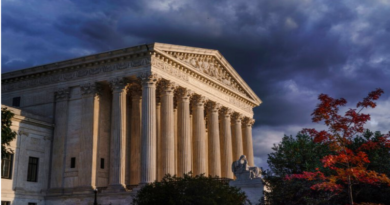US abortion law decision brings attention to rights of women in Africa

Millions of Americans will no longer have access to safe abortion services. The most impacted people are those who are undocumented, impoverished, young, black, and have suffered intimate partner abuse. Abortions become less safe when they are prohibited, not less common. Regardless of the legal situation, abortion occurs in around half of unwanted pregnancies [4-6].
A vote on whether or not abortion is a human right in situations including rape, incest, and fetal impairment is anticipated in the US Senate. The US would become unusual in the globe as a result of this choice. Since 2000, the abortion regulations of 21 African nations have been loosened, including seven that have adapted to the Maputo protocol [7-9].
The majority of bilateral funding for sexual and reproductive health comes from the US. Countries that significantly rely on foreign funding to finance their healthcare systems seek to donor nations for advice. Because they worry that the US global health aid they rely on may be decreased, countries may utilize the US abortion ban to further limit access to abortions [10, 11].
The most impacted are women and teenagers who become pregnant unintentionally, especially those who already deal with structural inequities. The decision might undermine local efforts to advance sexual and reproductive rights and bolster anti-choice forces [12-14].
The ruling may provide reproductive rights organizations in the United States and Africa the chance to work together to advance reproductive rights in Africa. Together, they might stop a US ruling from impeding the advancement of reproductive rights in African nations [15-17].
Totally, The Roe v. Wade decision, which established women’s access to abortion in the US as a fundamental right in 1973, is on the verge of being overturned by the US Supreme Court. Experts in reproductive health are worried that the decision might endanger women’s rights worldwide. People who are undocumented, poor, young, black, and have experienced intimate partner abuse are those who are most affected.
[1] J. McKeown, “A comparative investigation of metadiscursive clarifying devices in the abortion discourse of the US Supreme Court,” Discourse & Communication, p. 17504813221108827, 2022.
[2] K. Hong, “The Supreme Court’s Draft Abortion Decision Overturning Roe v. Wade: How Originalism’s Rejection of Family Formation Rights Undermines the Court’s Legitimacy and Destabilizes a Functioning Federal Government,” Montana Law Review Online, vol. 83, no. 1, p. 5, 2022.
[3] D. Herda, A Woman’s Right to an Abortion: Roe V. Wade. Enslow Publishing, LLC, 2016.
[4] I. Shah and E. Ǻhman, “Unsafe abortion in 2008: global and regional levels and trends,” Reproductive health matters, vol. 18, no. 36, pp. 90-101, 2010.
[5] E. National Academies of Sciences and Medicine, “The safety and quality of abortion care in the United States,” 2018.
[6] L. B. Haddad and N. M. Nour, “Unsafe abortion: unnecessary maternal mortality,” Reviews in obstetrics and gynecology, vol. 2, no. 2, p. 122, 2009.
[7] M. Berer, “The Cairo ‘compromise’on abortion and its consequences for making abortion safe and legal,” Reproductive health and human rights: The way forward, pp. 152-164, 2009.
[8] C. J. Petersen, “Reproductive justice, public policy, and abortion on the basis of fetal impairment: lessons from international human rights law and the potential impact of the convention on the rights of persons with disabilities,” JL & Health, vol. 28, p. 121, 2015.
[9] J. L. Ernst, L. Katzive, and E. Smock, “The Global Pattern of US Initiatives Curtailing Women’s Reproductive Rights: A Perspective on the Increasingly Anti-Choice Mosaic,” U. Pa. J. Const. L., vol. 6, p. 752, 2003.
[10] K. T. Storeng, J. Palmer, J. Daire, and M. O. Kloster, “Behind the scenes: International NGOs’ influence on reproductive health policy in Malawi and South Sudan,” Global public health, vol. 14, no. 4, pp. 555-569, 2019.
[11] B. B. Crane and J. Dusenberry, “Power and politics in international funding for reproductive health: the US Global Gag Rule,” Reproductive health matters, vol. 12, no. 24, pp. 128-137, 2004.
[12] D. Johnsen, “State court protection of reproductive rights: The past, the perils, and the promise,” Colum. J. Gender & L., vol. 29, p. 41, 2015.
[13] C. Soohoo and S. Stolz, “Bringing Theories of Human Rights Change Home,” Fordham L. Rev., vol. 77, p. 459, 2008.
[14] M. R. Basile, “Reproductive justice and childbirth reform: Doulas as agents of social change,” The University of Iowa, 2012.
[15] J. Joachim, “Framing issues and seizing opportunities: The UN, NGOs, and women’s rights,” International Studies Quarterly, vol. 47, no. 2, pp. 247-274, 2003.
[16] B. Hartmann, Reproductive rights and wrongs: the global politics of population control. South End Press, 1995.
[17] P. Richards, Pobladoras, indígenas, and the state: Conflicts over women’s rights in Chile. Rutgers University Press, 2004.

